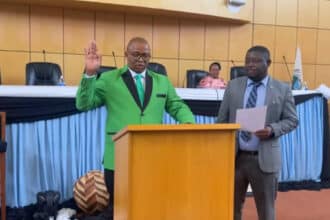Nhabe plans to turn morgue into a protected monument takes off
Nhabe museum has initiated the process to turn the old underground mortuary and medical stores site at Letsholathebe General Hospital in Maun into a protected tourism attraction site.
For many years, the underground mortuary and medical stores sit, which dates as far back as 1937, lay idle until they became notorious for harboring criminals and satanic cults meetings.
Nhabe museum board chairperson, Tshematshe Monwela has said that the board is in talks with a local lodge to make the underground site not only a protected monument but also profitable for the Ngamiland community.

“That is one of our sites, but we are in talks with a private company, which is very much interested in utilising the site,” explained Monelwa before adding that, “We could have probably concluded the talks had it not been for the coronavirus outbreak and ultimate lockdown, but as for now I cannot detail how exactly the transaction will work. But essentially they want it to feature on their trail,” Monwela explained.
The board Chair further explained that the museum was already working on a site trail along the Thamalakane River, which will have the underground mortuary two sites located on the banks of Thamalakane River and the Motsaudi Stop among other attractions.
Explaining how the underground mortuary came about Monwela said that, “As you are aware in any hospital there are bound to be dead bodies, so the hospital had to find a way of keeping the bodies fresh before families could collect them for burial. So they carved two ‘caves’ underground, one to be used as a mortuary and the other to store drugs that needed to be kept at a cooler temperature.”

However around 1944 when Ngamiland was hit by leprosy and the hospital recorded high numbers of deaths, the then Seventh Day Adventist church hospital sought help from the British protectorate and ultimately handed over the running and management of the hospital to the government of the day.
“That is how the hospital was given to the government, which had more resources and a mortuary with proper structures was built years later, leading to the abandonment of the underground hole,” said Monwela.







